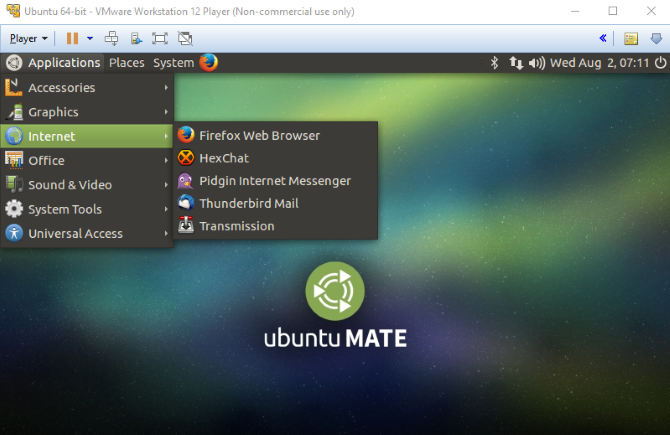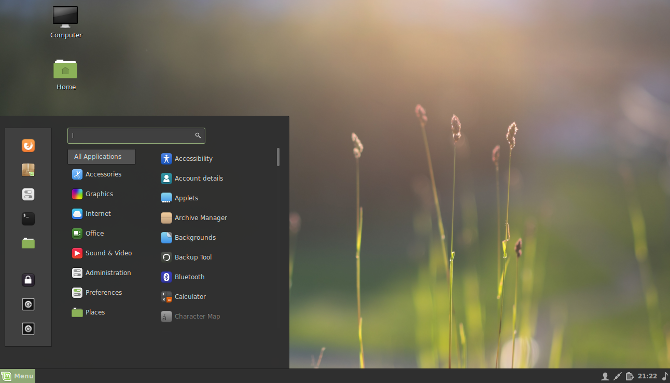Maybe you're thinking of switching from Windows or macOS to Linux, but you aren't sure about it. You've never installed an operating system before, or maybe just once or twice and it was a complete disaster of an experience.
Fortunately, installing Linux isn't as hard as you might think. In fact, as long as you pick a beginner-friendly flavor of Linux, the first time is usually an absolute breeze. Here's how to install Linux with ease on your computer and leave Windows or macOS for good.
Want to Try Linux Risk-Free? Use a Live Disc!
If you don't want to fully commit to installing a new OS right now (perhaps to skip all the data backups you'd have to make), then you're in luck. Most Linux distributions (also known as "distros," which are basically the different flavors of Linux) offer a "Live Mode."
Live Mode lets you try out Linux from a CD, DVD, or USB drive without overwriting or uninstalling your existing operating system.
Simply create a Linux live disc, insert it, reboot, and immediately experience Linux. You'll be able to try out various apps, tools, and access the web---but nothing you do will be saved. Live discs are an important tool as they let you try out Linux operating systems without making a big commitment. If you're happy, you can properly install Linux right from the live disc when you're ready.
There are over 50 different ways you can use a live Linux disc!
The Easiest Linux Install? On a Raspberry Pi
If you're looking for an installation that is an absolute cinch, then look no further than the extremely affordable Raspberry Pi.
Capable of running a surprising amount of Linux software, this low-spec microcomputer that was once only suitable for hobbyists and DIY techies is now as good as a desktop replacement ever since the launch of the Raspberry Pi 3B+ in 2018.
This makes it an ideal device on which to begin your Linux journey. You certainly wouldn't be the first: over 14 million devices have been sold so far. I myself became familiar with Linux via Raspbian, rather than installing a Linux OS on my PC.
If you're looking for a way to get to grips with Linux before switching, then using Raspbian is a great way to do this (or one of the other Raspberry Pi operating systems out there).
Installing an OS on the Raspberry Pi is a bit different than installing on desktop computers and laptops. Rather than installing from a disk image to a hard disk drive, all you need to do is write the disk image to an SD card, load the card into your Raspberry Pi, and boot up.
See our guide on how to install an operating system on the Raspberry Pi, which explains this in greater detail.
Consider Running Linux in a Virtual Machine
Rather than switch operating systems entirely, you can run Linux in a virtual machine. This will let you run Linux on your PC as if it were an app, letting you test flavors of Linux without leaving Windows or macOS fully behind.
Importantly, you do go through the motions of installing Linux when doing so in a virtual machine, so it gives you risk-free practice on actually installing Linux---and when it comes time to install it on your PC proper, you know exactly what you're doing.
See our tutorial on running Linux in a virtual machine for more details.
These days, it's even possible to access a Linux environment within Windows without having to worry about installing a new OS. Windows 10 has a feature called Windows Subsystem for Linux, which lets you install the Bash command line shell. This alone can help you get to grips with Linux without leaving the familiarity of the Windows environment!
The 3 Easiest to Install Linux Operating Systems
When you're ready to install Linux on your desktop you'll want a Linux operating system that installs quickly, and with the minimum of fuss. Although most Linux OSes are straightforward, some are easier than others.
We've picked three you should consider for installation.
1. Ubuntu
At the time of writing, Ubuntu 18.04 LTS is the latest version of the most well-known Linux distribution of all. Installation of this OS is strikingly easy, having been polished and refined since its first release in 2004.
Our guide to Ubuntu will help you get started.
2. Linux Mint
The main rival to Ubuntu for many, Linux Mint has a similarly easy installation, and indeed is based on Ubuntu. While the experience of using Mint is different to Ubuntu, you'll find it just as simple to get used to.
You'll find many reasons to love Linux Mint.
3. MX Linux
While Linux Mint has a very traditional desktop feel, MX Linux aims for something even closer to Windows. With an easy installation system, MX Linux might just be the best option yet for anyone switching from Windows to Linux for the first time.
Other Linux distros are available, of course. You'll find more to choose from in our list of the best Linux distros.
What About Dual-Booting Linux?
When you come to install Linux, it's worth knowing you can either replace your existing operating system OR run the two operating systems alongside each other. The latter is called dual-booting.
While replacing the old OS might be preferable, having both operating systems running on your PC together is useful. For instance, if you ever want to go back to Windows, all you would need to do is reboot!
Installing and Trying Linux Is Surprisingly Easy!
By this point, it should be obvious to you that installing Linux isn't as difficult as you might have thought. In fact, it's entirely possible to get a Linux machine up and running in the time it takes to read this article.
Ready to switch to Linux? Our list of things you should know before switching to Linux should help you to make the process as smooth as possible.



